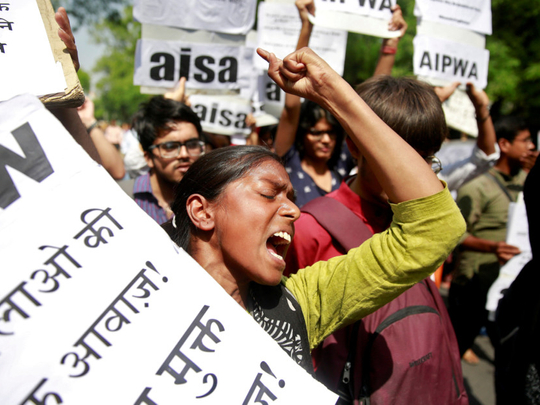
A Thomson Reuters Foundation survey, ranking India as the world’s most dangerous country for women, has stirred up a hornet’s nest. While the objective of the poll was to ascertain the ground realities vis-a-vis risks faced by women, particularly in areas of health care, access to economic resources, customary practices, sexual and non-sexual violence and human-trafficking, New Delhi trashed the findings instantly on grounds of defective methodology and questionable subjectivity.
The Indian Ministry of Women and Child Development derided the use of an opinion poll to peg India as the most dangerous country for women and saw it as a smear campaign for diverting attention from real improvements seen in recent years. Though, the survey was not based on a systematic collection and interpretation of data, as it drew conclusions from subjective opinions of 548 individuals — 43 of whom are incidentally India based — from countries evenly spread across all continents, the Indian response was grossly disproportionate and smacks of a cover-up. Will such a knee-jerk reaction actually help counter the prevailing negative perception globally and institute an effective strategy for improving the conditions of women, suffering grievous violence and socioeconomic discrimination continuously?
More than two years after the adoption of the 2030 Agenda for Sustainable Development — by way of which the global political leadership vowed to eliminate all forms of violence and discrimination against women and girls by 2030, thus allowing them to live freely and safely and participate equally in political, economic and public life — the situation has not changed much on the ground. Today, one in three women experience physical or sexual violence during their lifetime world over.
The curse of child marriage still haunts a large part of the globe, with almost 750 million girls getting married before their 18th birthday. This not only leads to rising teen pregnancies but also expose them to serious health risk, apart from curbing educational and other opportunities. And cut to India, the condition is no different. We may be outraged by this unexpected external rap — that too from an internationally reputed charitable organisation — but the fact is, even Indian census statistics and socioeconomic and crime data disseminated by government-owned entities have repeatedly pointed to the continuous suffering of women from violence and societal discrimination, notwithstanding improved educational opportunities and growing mobility.
Moreover, the Indian government’s Economic Survey (2017-18) carried a pink theme to emphasise on women empowerment and gender inequality and highlighted the urgent necessity to address deeply ingrained societal issues harming women, as it adversely reflects on education and reproductive health, as well as the economic agency of women in the country. This annual survey, which is the official report card of the economy, exposes how a whopping 21 million unwanted girls have been created by the Indian families’ penchant for boys over girls.
Besides, employment of women in the work force has declined to 24 per cent from 36 in 2005-2006. Worse still, women do not have equal opportunities for political participation in the world’s largest democracy, as reflected in the institutional lethargy to reserve 33 per cent of all seats in the Lower House of Indian parliament. Add to it the abysmal record of 106 rapes per day, with four out of every ten victims being minors. And that is precisely the reason why it is widely said in India, from the womb to the tomb, women are the worst victims of violence and deprivations.
Therefore, instead of burying heads in the sand, it is time for India, as a nation, to stand up and confront those reasons that have made the women folk vulnerable to rampant human trafficking, sexual violence as well as victims of oppression, further exacerbated by a regressive patriarchal social system and conservative cultural traditions.
Surely, the mammoth crime rate against women, despite a series of legal judgements and strengthening of related laws to deal with the menace, tarnishes the image of a nation reputed for her vibrant civil society network of female activists, tirelessly working for women’s emancipation, from the rural hinterland to metropolis, day in and day out. Thomson Reuters conclusion might not be accurate, but a sizeable number of Indian women still long for a secured status in the society.
Seema Sengupta is a Kolkata-based journalist and columnist.








